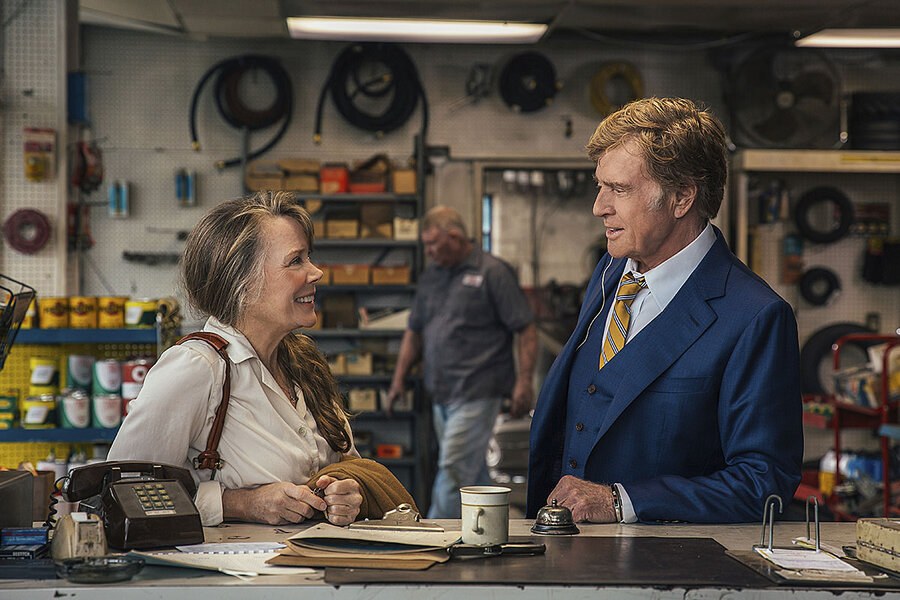‘The Old Man & the Gun’ may be Robert Redford’s last acting role
Loading...
Although he has recently backtracked a bit, Robert Redford has said that “The Old Man & the Gun” will be his last acting job, although he has not ruled out directing. Famous actors have sometimes made similar declarations, and occasionally, as in the case of Cary Grant, they meant it. In other cases, as with James Cagney in “Ragtime,” there was a brief return to the screen a couple decades later. At 82, Redford may want to rethink his fade-out.
I say this because I am not among those critics who think “The Old Man & the Gun” is a fitting valedictory, although I can see why Redford and others might think so. It has a forced, elegiac wistfulness that a lot of people will mistake for deep-dish emotionalism. I think the film also disserves what Redford, at his best, can be as an actor in favor of a fraudulent, senior citizen variation on glossy movie-star iconography.
Redford plays the real-life figure Forrest Tucker, a career criminal and escape artist who broke out of San Quentin State Prison when he was 59 and, alone or in tandem, went on to rob a string of banks across the South and Southwest. What sets Tucker apart from the average crook, apart from his advanced age, is, at least as the film portrays him, an inherent courtliness. He flashes a gun to show he means business but never uses it. He’s polite to the tellers as they bag the loot. In addition to a fake mustache, he often sports a suit and fedora. After one of the robberies a bank manager, asked to describe Tucker, describes him as “sort of a gentleman.”
David Lowery directed and adapted David Gann’s 2003 New Yorker profile of Tucker, which is quite a bit more revelatory than the movie. The way Redford plays him, Tucker is a sweet-souled codger who robs banks because he’s good at it. He lives simply, always on the move, and doesn’t appear to need the money. He strikes up a friendship with Jewel (Sissy Spacek), a widowed farm owner, who of course falls in love with him. He wants to pay off her mortgage without letting her know he did it. Even when it’s pretty obvious to Jewel what Tucker does for a “living,” she’s
googly-eyed. After all, he’s a bad boy with a heart of gold.
Even law enforcement is charmed. John Hunt (Casey Affleck), the local Austin police detective on his trail, develops a fondness for his prey. And Tucker, enjoying the pursuit, returns the good feelings. It’s all so cozy. What we don’t see in Redford’s portrayal is much sense of the boy who grew up in the Depression and lived a life of hard time behind bars, even if he often escaped only to be caught again. The highly fraught family circumstances described in Gann’s piece, with wives and children left behind, is only sketchily drawn in the film. There is not a trace of rage in Tucker’s makeup. His occasional allies in crime – dubbed the Over the Hill Gang in the newspapers and played by Danny Glover and Tom Waits – are equally toothless. This must be the sunniest film noir ever made.
The film is set in the early 1980s and looks as if it was made then, too. This is no doubt intentional: Lowery uses the film’s old-fashionedness as a way to underscore its poky sentimentality. He wants to show us that the film, like Tucker himself, exists in a kind of time warp. Although violence, or its threat, is at the center of Tucker’s existence, the film is resolutely bloodless.
Redford’s movie-star iconography rests on his golden-boy glamorousness, and there’s no doubt he brought major star wattage to films like “Butch Cassidy and the Sundance Kid,” “The Sting,” and “Out of Africa.” But it’s not often recognized that Redford, especially earlier in his career, had a mettle, an orneriness, that set him apart from the other glamourpusses of his era. In early movies like “This Property Is Condemned” and “Inside Daisy Clover,” or, somewhat later on, in “Downhill Racer,” “The Candidate,” and even parts of “The Way We Were,” he was as edgy and quicksilver, in his own way, as De Niro or Pacino.
But this is not the face that Redford is presenting to us in “The Old Man & the Gun.” The camera lingers on his weather-beaten handsomeness as he offers up lingering, faraway looks meant to signify hard-won wisdom and a life, despite everything, well-lived. It’s a form of self-congratulation that saps Redford of his steel.
I hope this won’t be his last acting job. He’s too vital to go in for such a soggy send-off. Grade: C+ (Rated PG-13 for brief strong language.)







